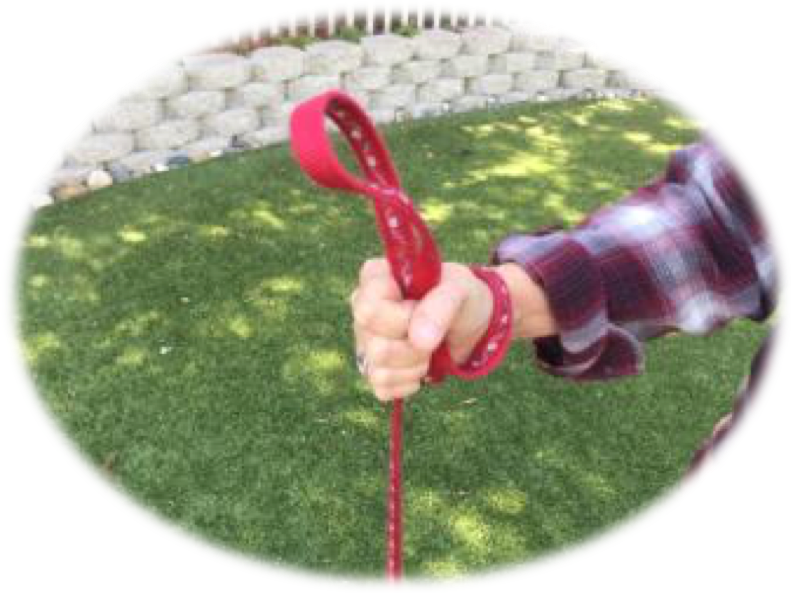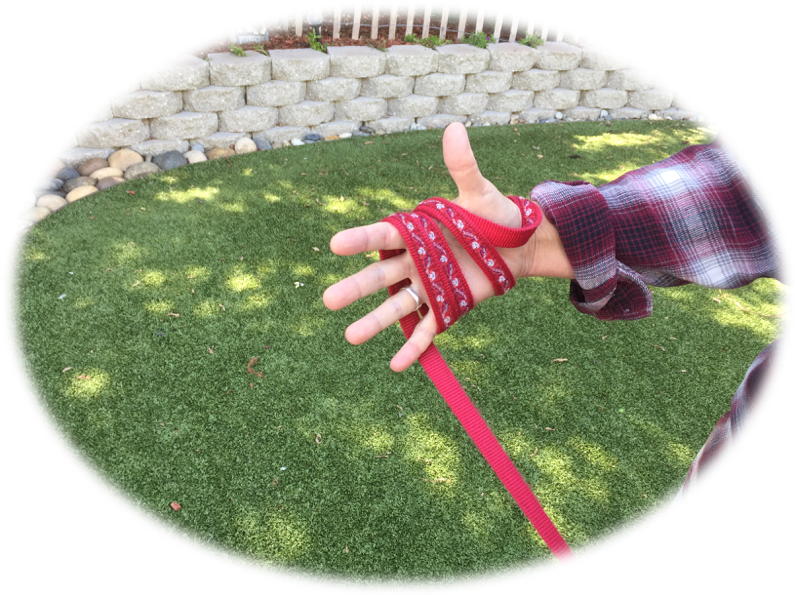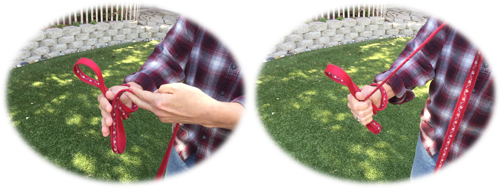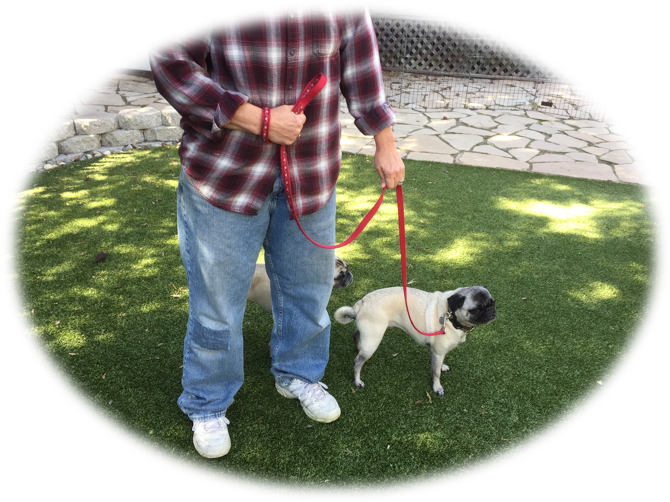
August 2019
Audience: Foster Caregivers, Public, Shelter/Rescue Staff & Volunteers
A leash is a great management and training aid for your dog. The leash keeps your dog safe, preventing your dog from running away from you and into traffic, chasing other dogs and small animals, and jumping on people.
Using a Leash Outdoors
- Use a 4-6 foot leash for walking your dog.
- Retractable leashes are not for training and can damage hands, fingers and cause damage to your dog if they get entangled in the cord.
- Hold the leash in a way that reduces risk of injury.
- Palm method

- Don't wrap the leash around your hands or fingers

- When gathering the leash, gather it accordion style.

- Keep both hands on the leash. If you walk your dog on your left side, your left hand manages the length of the leash. The right hand securely holds the leash loop, preventing accidental dropping of the leash.

- When taking your dog out for a walk, keep them on a loose leash - meaning the leash has a slack in a "J" or a "U" shape instead of being tight.
- You may need to shorten the leash when walking by people and other dogs to prevent your dog from jumping up or being approached uninvited.
Using a Leash Indoors
- If you have a dog that doesn't know the house rules yet, you might consider keeping them on leash in the house so you can prevent them from getting into trouble.
- An indoor tether can also be useful. There will be times when you might tether your dog to keep them close to you in the room, preventing them from moving freely around the house. Create a tethering station by securing the handle/loop of the leash to the leg of a heavy piece of furniture, giving your dog a 4-5 foot radius to move around. You can also tie your dog to the desk you're using or even to yourself. Never leave a dog unsupervised when tethered.
- If your dog is fearful, you might consider having them drag a leash in the house so you can pick up the leash without getting too close, which may scare them.
- If your dog jumps on visitors at the door, you might consider having them on a leash when guests come in. Step on the leash to control the length, so it's long enough that the dog can sit or stand comfortably, but short enough to prevent jumping.